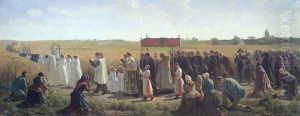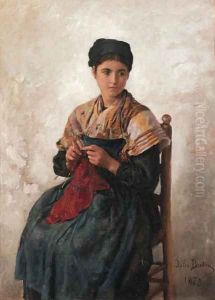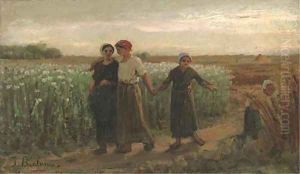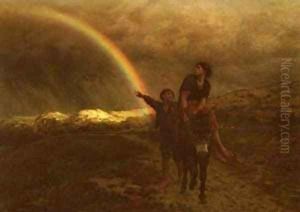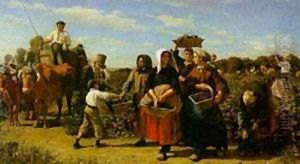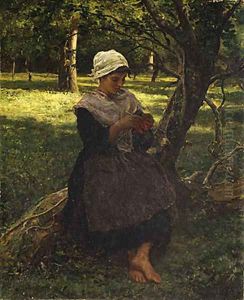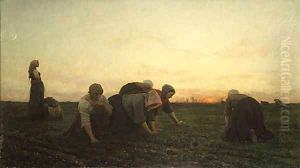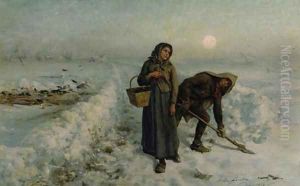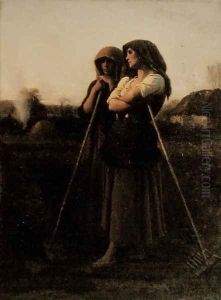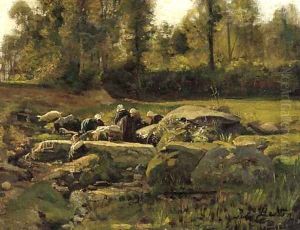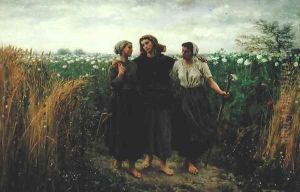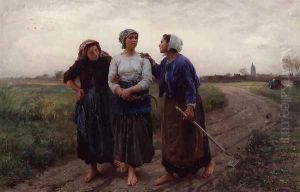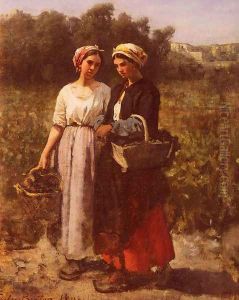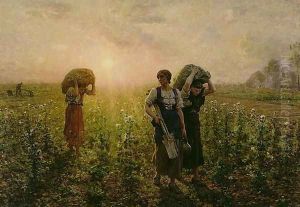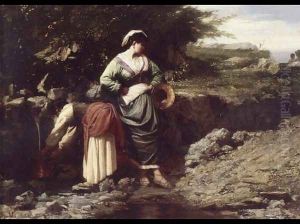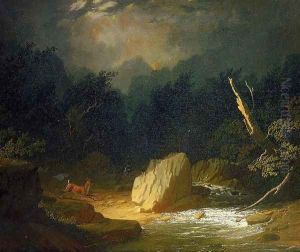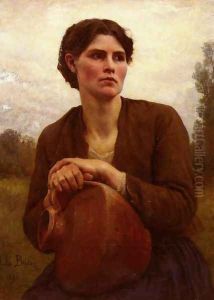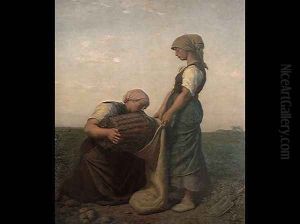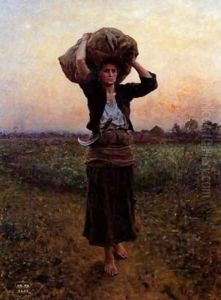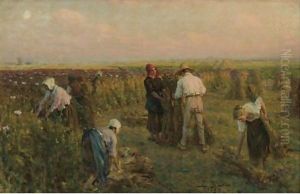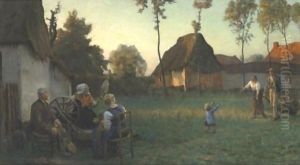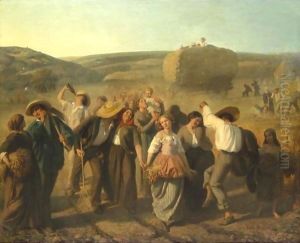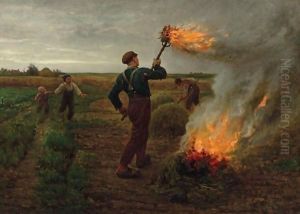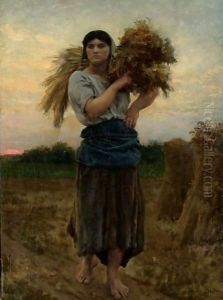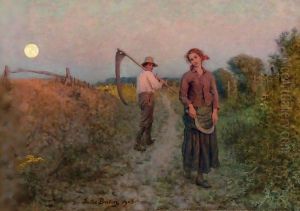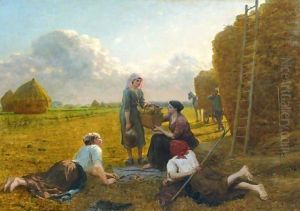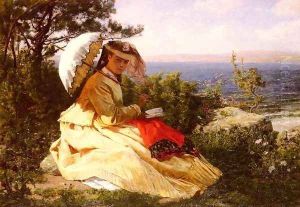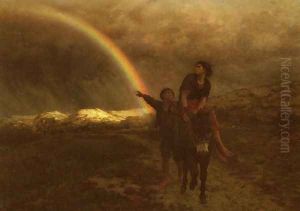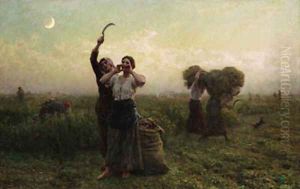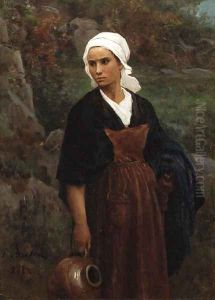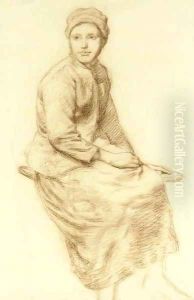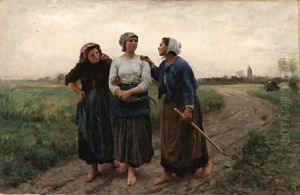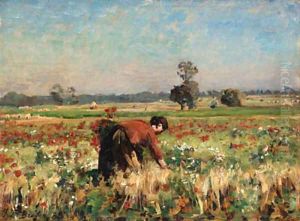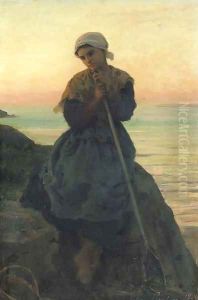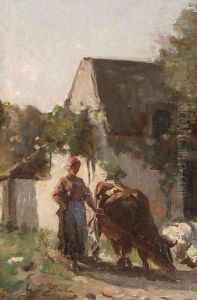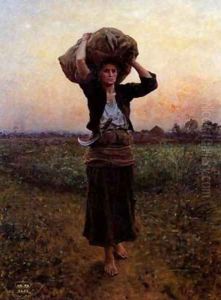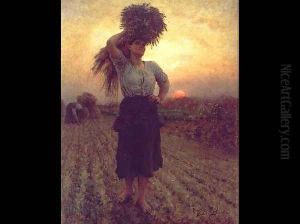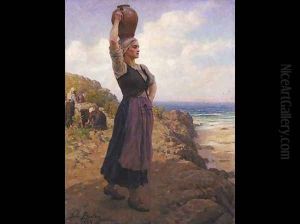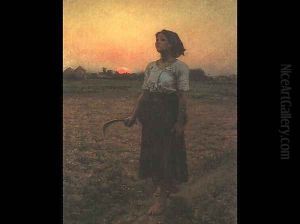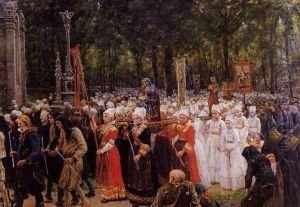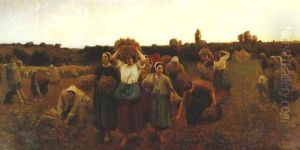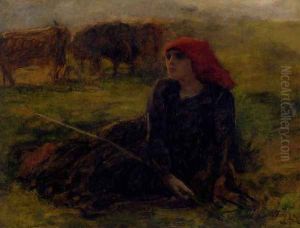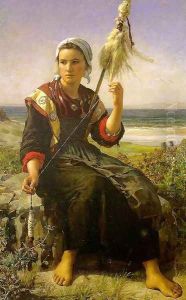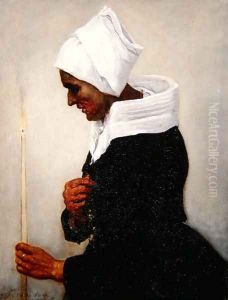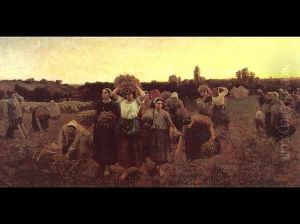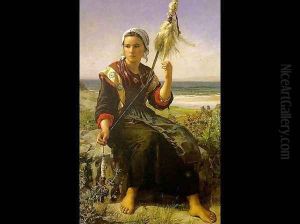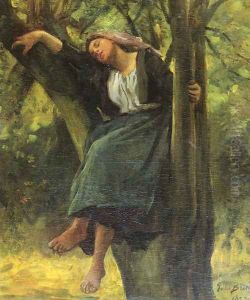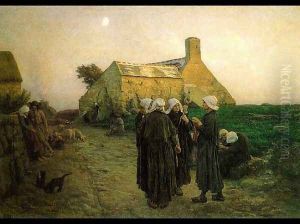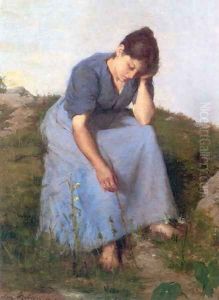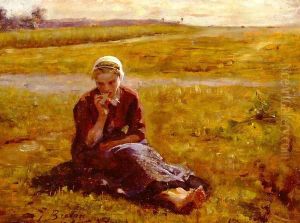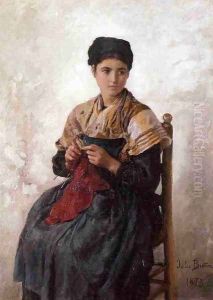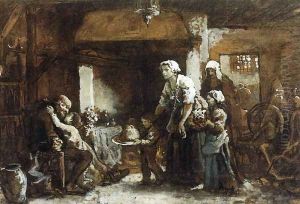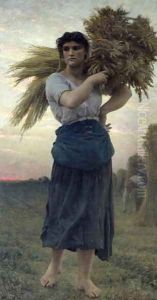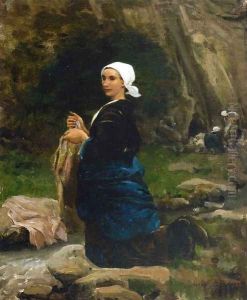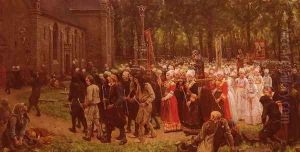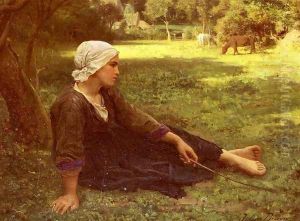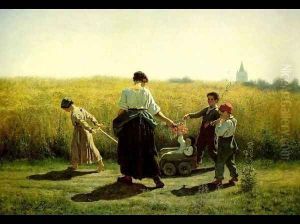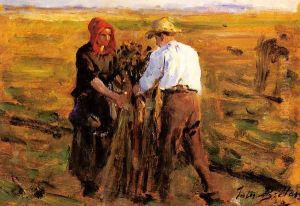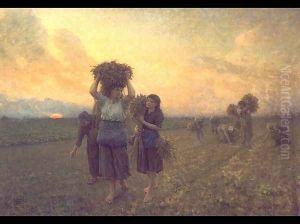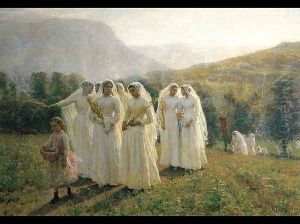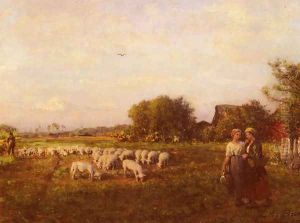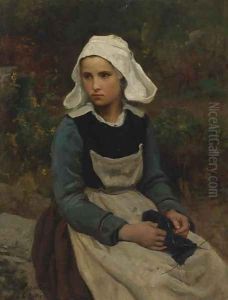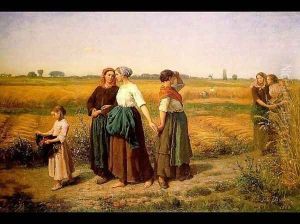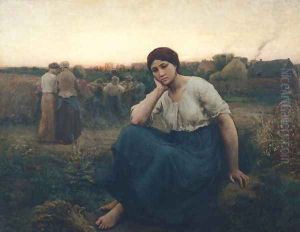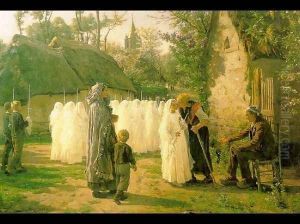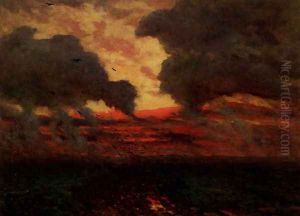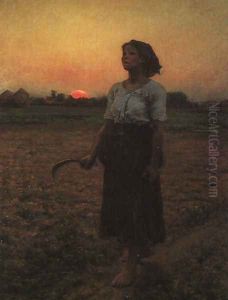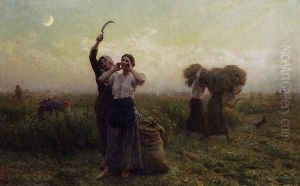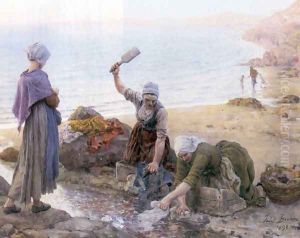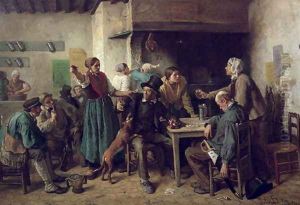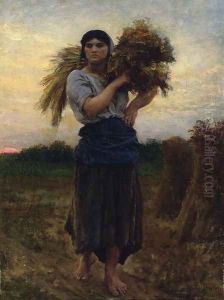Jules Breton Paintings
Jules Breton was a French Realist painter, born on May 1, 1827, in Courrières, a small village in the Pas-de-Calais region of France. He grew up in a rural setting, which deeply influenced his artistic direction, leading him to become one of the most renowned painters of the French peasantry and rural life. Breton showed an early interest in art, and despite his family's initial reservations, he pursued his passion for painting. He studied at the École des Beaux-Arts in Paris and trained under several notable artists, including Michel Martin Drolling and Charles de Steuben.
Breton's work is characterized by its focus on the lives and landscapes of the rural French countryside. His paintings often depicted peasant women in fields, capturing moments of daily life with a poetic realism that drew acclaim from both critics and the public. Among his most famous works are 'The Song of the Lark' (1884) and 'The Gleaners' (1854), which exemplify his ability to convey the dignity and beauty of peasant life. His art was not just a depiction of rural life but also a commentary on the changing landscape of France during the 19th century, as the country underwent significant social and economic transformations.
Throughout his career, Jules Breton was celebrated for his mastery in portraying the natural beauty and solemnity of the peasant class. He received numerous awards and honors, including a gold medal at the Paris Salon, an event that was the pinnacle of an artist's recognition in France during his time. His works were exhibited internationally, and he gained a significant following, including among collectors and the artistic community.
Breton was also an accomplished writer, authoring several books and memoirs that detailed his thoughts on art and rural life. These writings provide valuable insights into his artistic process and the philosophical underpinnings of his work.
He continued to paint and write until his death on July 5, 1906, in Paris. Today, Jules Breton is remembered as a pivotal figure in the Realist movement, with his paintings held in high regard and featured in major museums around the world. His legacy endures as a testament to the beauty and dignity he found in the everyday lives of the rural French peasantry.
